Skype: neodalle-travel
Tel: +86 135 7447 2266
E-mail: sales@visitaroundchina.com
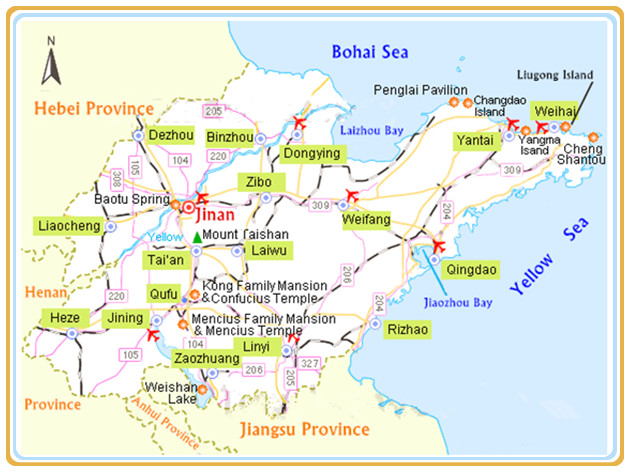
History of Jinan
Jinan is a historical city with a history of some 2,000 years and is famed for its numerous relics. It is the cradle of the Longshan Relics Culture, the reputed prehistoric culture of China and is found in Longshan Town, hence the name. Here you will find far more than you would expect, Great Wall of Qi State (a state of the Zhou Dynasty (770B.C. – 221B.C.)), the colored sculptures of the Song Dynasty (960-1279) in the Lingyan Temple and so on.
What to see in Jinan?
Jinan has few advantages and lacks a metropolitan atmosphere, the highlight being its numerous springs. Some people say Jinan's glamour is not merely its enticing natural beauty, but more the warmth of the local people. The beauty of nature is thin and weak, but the beauty that comes from people will last forever. The city is hospitable and receives visitors from all over the world. Marco Polo once visited it and left words of praise to this city. The Baotu Spring, Daming Lake and the Thousand Buddha Mountain decorate the city as a beautiful garden.
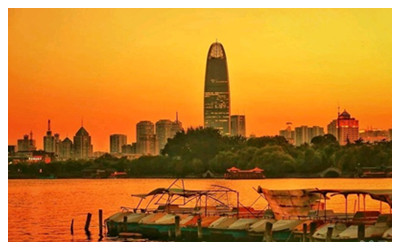 |
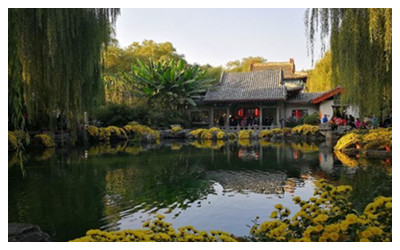 |
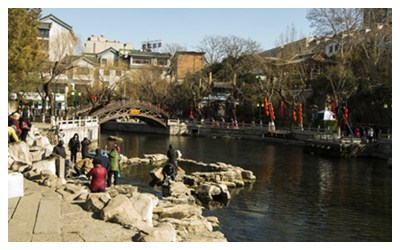 |
| Daming Lake Park | Baotu Spring Park | Black Tiger Spring |
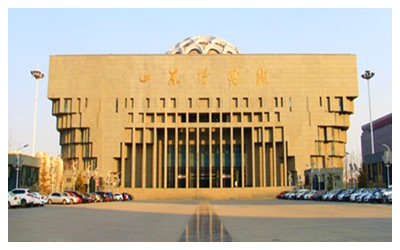 |
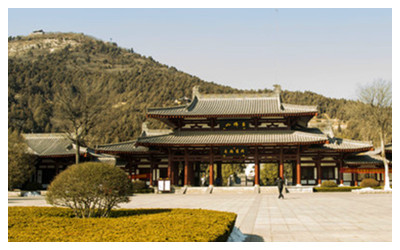 |
|
| Shandong Provincial Museum | Thousand Buddha Mountain |
After visiting springs, you can go to the shopping malls and Quancheng Square around the scenic spots to feel the prosperity of Jinan. The best time to travel to Jinan is between September and November, because the spring bubble up higher and intensively due to the rising in groundwater level after the rainy season. Also, Jinan is a modern metropolis. It plays an important role in equipment manufacturing and Chinese transportation.
When to visit Jinan?
Jinan climate is cold in winter and hot in summer while in spring the weather often becomes mainly dry with some rain. So many people consider that the autumn is the best season in which to pay a visit. However, spring is really the preferred time to visit the Baotu Spring and it goes without saying that if you wish to see the wonderful snowscape of Daming Lake then you need to go in winter.
The average temperature in July is about 27.6ºC and the highest temperature can exceed 35ºC. Half the annual rainfall comes during this period, so avoid visiting there in summer. With the arrival of autumn the temperature drops to a pleasant level. From August to October, the temperature reduces at a rate of 5ºC to 6ºC per month. Winter weather of Jinan is cold but less so than its neighboring cities.
How to reach Jinan?
Jinan has direct flights with major cities in China and also some international destinations, such as Osaka, Tokyo, Seoul and Bangkok. This city also equips with fast transport network and enjoys developed high-speed rail and highway connection with popular tourist cities, like Guangzhou, Xi'an and Qingdao. City public bus and taxi can be easily taken at most places around the city. Nowadays, the city operates two metro lines.
Jinan Travel Tips
Local Festivals: Jinan is the right place to see some very typical festivals including The Lantern Festival in the Baotu Spring Park, the Lotus Festival in the Daming Lake Park and the Double-Nine Festival on the Thousand-Buddha Mountain.
Local Food: Jinan cuisine is famous for its scrumptious, aromatic, fresh and pure dishes. The methods of cooking employed in the preparation of these local foods include deep-frying, grilling, frying and stir-frying but the food is non-greasy. Nutritious soup is an important feature of Jinan cuisine while shallot and garlic are widely used to create delicious flavors. Tang Cu Li Yu (Sweet and Sour Carp), Jiu Zhuan Da Chang (Fried Pork Chitterlings) and Jinan Roast Duck are very popular local delicacies.
Local Shopping: As the capital city of Shandong Province, Jinan is a venue for purchasing products from the whole province. In the malls, souvenir stores or the street stands, you may be sure to find something that will serve as a pleasant reminder of your visit here.
 Ask Questions ?
Ask Questions ?